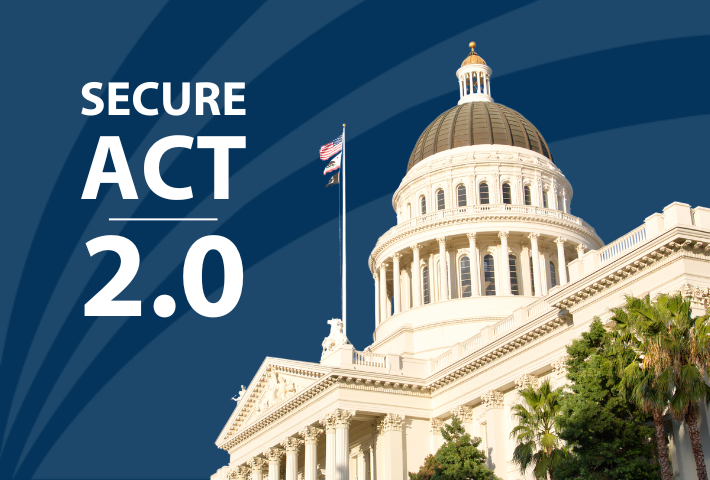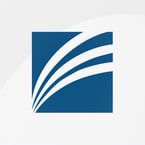6 minute read
Seven highlights of the newest version of the bill—and what it might mean for you and your wealth
On December 29, 2022, President Biden signed into law the Setting Every Community Up for Retirement Enhancement 2.0 Act of 2022 (SECURE 2.0 Act) as part of the Consolidated Appropriations Act (CAA) of 2023, the $1.7 trillion omnibus spending bill funding the U.S. federal government for the 2023 fiscal year. SECURE 2.0 is a follow-up to the 2019 SECURE Act, and similarly contains provisions related to retirement savings: over 90 new provisions intended to boost Americans’ financial readiness for retirement. The effective date of the changes depends on the provision in question, with some becoming effective in 2023 and others becoming effective in future years. Below is a summary of some of the provisions.
Highlight 1: Increased Age for Required Minimum Distributions (RMDs) from Retirement Plans
For pre-tax retirement accounts, such as individual retirement accounts (IRAs), the account holder is generally required to take RMDs when that person reaches a specific age. Before the 2019 SECURE Act was passed, that age was 70½; the 2019 SECURE Act moved that age to 72. SECURE 2.0 further extends the age as follows:
- Age 73, beginning in 2023: “In the case of an individual who attains age 72 after December 31, 2022, and age 73 before January 1, 2033 . . .” (SECURE 2.0 Act § 107)
- Age 75, beginning in 2033: “In the case of an individual who attains age 74 after December 31, 2032 . . .” (SECURE 2.0 Act § 107)
Highlight 2: Reduction of Excise Tax (Penalty) for Failure to Take Timely RMD
Before 2023, if you failed to take a timely RMD or to take a large enough distribution by year-end, you may have had to pay a 50% excise tax on the required distribution amount. SECURE 2.0 reduces this excise tax to 25%. The excise tax can be further reduced to 10% if the failure to take the RMD is corrected in a timely manner. (SECURE 2.0 Act § 302)
Highlight 3: Higher Catch-Up Contributions
Individuals ages 60 through 63 years old will be able to make catch-up contributions up to $10,000 annually to a workplace retirement plan such as a 401(k) plan, and that amount will be indexed to inflation. This amount is more than the $7,500 current catch-up amount for people age 50 and older. The new catch-up amount will be effective starting in 2025. (SECURE 2.0 Act § 109)
Starting in 2024, all catch-up contributions to a 401(k) plan for participants earning over $145,000 annually must be made on a Roth (after-tax) basis. (SECURE 2.0 Act § 603)
Starting in 2024, the additional $1,000 “catch-up” amount for those age 50 or older for Roth and traditional IRAs will also be adjusted for inflation. (SECURE 2.0 Act § 108)
Highlight 4: Qualified Charitable Distributions (QCDs) Indexed for Inflation
Currently, IRA owners who are over the age of 70½ can elect to have up to $100,000 distributed from their IRA directly to a qualified charity. Such distributions are not taxable. In the past, the $100,000 limit was not indexed for inflation, but per SECURE 2.0, the QCD limit will now be indexed for inflation. (SECURE 2.0 Act § 307)
Highlight 5: One-Time Election for QCD to Charitable Remainder Trusts (CRTs)
SECURE 2.0 permits a one-time QCD of $50,000 to be made to a charity (or charities) through a split interest entity, which includes CRTs. (SECURE 2.0 Act § 307)
Highlight 6: Tax- and Penalty-Free Rollovers from 529 Accounts to Roth IRAs
Although 529 plans offered significant tax benefits for funding educational/college expenses, including tax-free withdrawals for qualified education expenses, there is often a concern that if funds are withdrawn for non-qualified education expenses, or if the account is overfunded, the account beneficiary could face a substantial tax liability on the withdrawal of those funds. For non-qualified withdrawals, the account beneficiary will pay federal (and sometimes state) income taxes on the gains in the account, and these withdrawals are also subject to a 10% penalty. SECURE 2.0 alleviates this concern by allowing tax- and penalty-free rollovers from 529 accounts to Roth IRAs. 529 plan beneficiaries are permitted to roll over up to $35,000 over the course of their lifetime to a Roth IRA, if the following requirements are met:
- The Roth IRA must be in the same name as the beneficiary of the 529 plan.
- The 529 plan must be in existence for 15 years or longer.
- Only contributions and earnings attributable to contributions made more than five years ago are eligible for transfer.
- The transfers count toward cumulative contribution limits for Roth and traditional IRAs.
- The beneficiary must have earned income equal to the amount transferred each year.
- Income limits for Roth IRA contributions do not apply to transfers.
This provision is effective in 2024. (SECURE 2.0 Act § 126)
Highlight 7: Expanded Access to Retirement Funds
SECURE 2.0 expands the ability of the account owner to access funds from a retirement account without incurring the 10% early withdrawal penalties for withdrawals taken before age 59½. (Income taxes on withdrawals may still apply.) Below is a summary of some related provisions:
- Withdrawals for certain emergency expenses. § 115 permits participants to access up to $1,000 (once a year) from retirement savings for emergency personal or family expenses without paying the 10% early withdrawal penalties (effective 2024).
- Emergency savings accounts linked to individual account plans. § 127 allows employees to set up a Roth emergency savings account with up to $2,500 per participant (effective 2024).
- Penalty-free withdrawal for domestic abuse. § 314 permits survivors of domestic abuse to withdraw the lesser of $10,000 or 50% of their retirement account without penalty (effective 2024).
- Special rules in connection with qualified federally declared disasters. § 331 allows victims of a natural disaster—if it is a qualified, federally declared disaster—to withdraw up to $22,000 from their retirement account without penalty. The withdrawal is treated as gross income over three years without penalty (went into effect with passage of the act).
- Penalty-free withdrawal to pay long-term care insurance premiums. § 334 allows a penalty-free withdrawal of up to $2,500 per year from retirement plans to pay premiums for specific long-term care insurance (effective three years after the date of enactment of SECURE 2.0).
If you have questions about how these changes might impact your wealth plan for 2023 and beyond, please contact your wealth advisor.
Not yet a client? Connect with us and discover how we can help achieve your financial goals.




